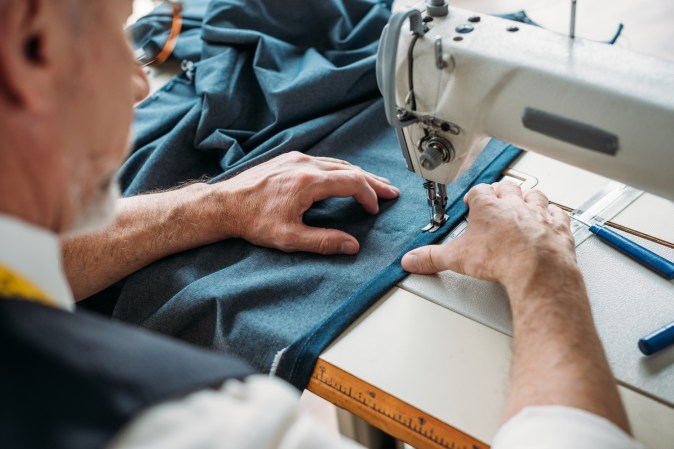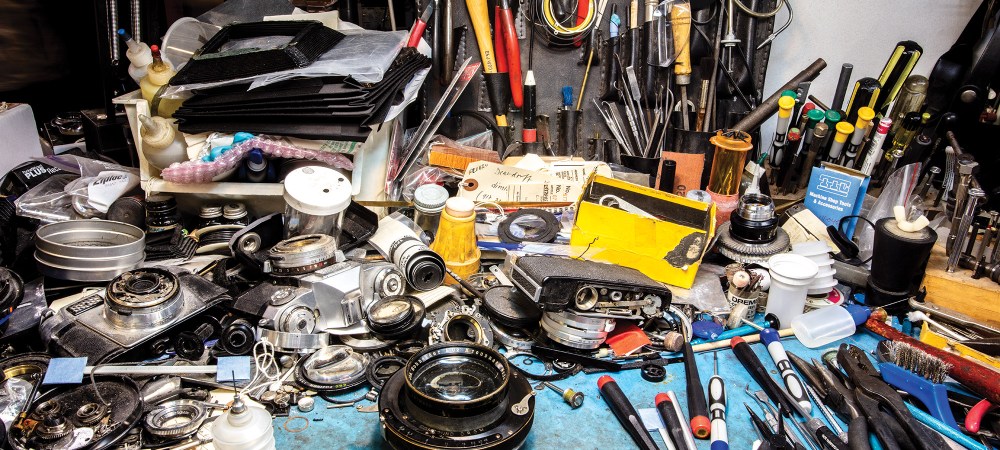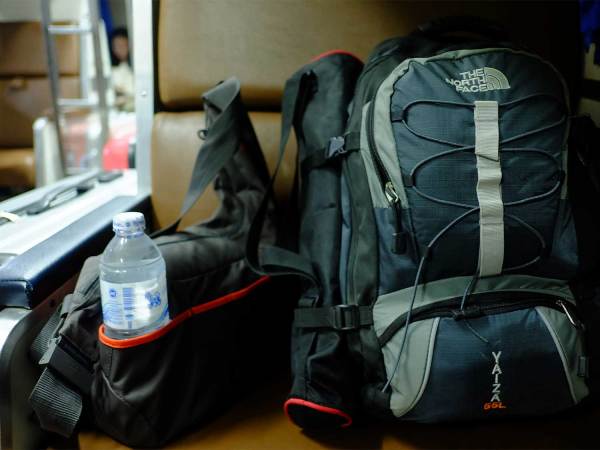

There’s a particular sick stomach lurch that happens when you rip a favorite pair of jeans, not unlike the feeling of losing a beloved pet or fumbling a fragile family heirloom. For many of us, the denim we live in becomes an inextricable part of our lives.
But a tear doesn’t have to mean tears. In recent years, a handful of pros have gained online acclaim by showing that it’s possible to re-weave denim, thereby healing a rip instead of just patching it.
“Pretty much anything can be fixed,” says Kattya Torres, owner of New York City-based Denim Therapy. Torres’ company has become famous among jean lovers for seamlessly repairing even the most dramatic rips. “It’s like a puzzle. I have had jeans come in here that look, honestly, like a g-string, and we’re able to reconstruct it.”
While you may not want to attempt that level of denim surgery right away, it’s possible to pull off some smaller patch jobs from the comfort of your own home.
Jean therapy for beginners
“Denim is extremely forgiving. It hides a lot of imperfection,” Torres says. That’s good news for those of us without access to the signature Colour Match system pioneered by Denim Therapy, or the specialized industrial sewing machines touted by companies like San Francisco-based Self Edge. But if you’re willing to tolerate some imperfection, you can do a passable job with some basic supplies and a standard sewing machine (or, if you don’t have a sewing machine, with a lot of patience).
Ripped knees and crotch blowouts are the two most common types of repairs Torres sees, and both are within reach of the home re-weaver.
“The most important part of the reweaving process is the color match,” says Torres. “And you know, no denim is truly blue.” She suggests taking your jeans with you to the fabric store so you can get the best thread color for the job. Look carefully at the area around the tear—depending on the aging or dye patterns, it may be a different color than the jeans overall.
You might feel tempted to buy heavy thread to make your fix as strong as possible, but Torres says you’re actually better off going with something lightweight. A common beginner’s mistake is reinforcing a repair so much that new tears form along the edge of the patched spot. Avoid this by grabbing some ordinary cotton sewing thread.
What you’ll need:
- Lightweight thread
- Fabric for backing (either scrap material or something you can iron on)
- Pins
- Sewing machine
- Tailor’s chalk (optional)
How to reweave your jeans

1. Clean up the area around the tear as much as possible. Trim off all loose threads and be careful not to stretch the tear open any more. Instead, try to bring the edges together, keeping the opening as small as it can be.
2. Prepare your backing. If you’re using an iron-on patch, turn the jeans inside out and cut the patch so it covers 1-2 inches outside the tear. If you’re using fabric, hold the material behind the hole and pin it in place, making sure to fasten any irregular tatters of denim to the fabric. Take your time with this step—it’s critical to have good, solid backing on the inside, Torres advises.
3. Iron or sew around the edge of the patch to fasten the backing to the denim. If you’re sewing, don’t worry too much about making straight lines—these seams will likely be covered over when you start reweaving. But do make sure any loose bits of denim are firmly sewed down over the patch, so they won’t bunch up and form unsightly lumps in the next step.
4. Thread your sewing machine with the color you picked out. If you have never done this before, take time to read the instructions. There are no shortcuts on the road to success—believe me, I’ve tried.

5. Line up the area you are going to be sewing over. “Follow the grain of the denim,” Torres says. That can take some practice, so she suggests sketching a few lines in tailor’s chalk to help you stay oriented to the direction of the weave.
6. Moving slowly but smoothly, begin sewing over the damaged area. Advance an inch or two past the edge of the tear and then reverse the machine to zig-zag back over the patch. Stay wide—you should cover the full breadth of the tear with the first couple zags, then keep going back over the area as new stitches fill in the tear.
7. Don’t stop. “It’s like a magic eraser,” Torres says. “You just keep going until you don’t see the damage.” Be careful not to sew pocket linings into the new material. Be warned: The inside of the jeans may look like a mess, but the outside should start to look smoother and more consistent.
Preventative patching can keep your jeans going strong
To make your jeans last as long as possible, it’s best to address small tears and weak spots as soon as they appear, rather than letting them fray into a serious problem. For these smaller areas, you might not need to reweave anything—a simple patch might buy you more time with intact jeans.
You can use any fabric for this, including spare scraps of denim or iron-on material. Cut the patch just an inch or two wider than the weak area, and apply it to the inside of the jeans.
If you’re sewing on a patch, you can make your stitches nearly invisible from the outside by returning your needle through the same hole (or as close as you can get) that it came out of. The stitches will be visible from the inside, but there will be almost no hint of thread on the outside.
More than just a piece of fabric
“Everything has a story,” Torres says. Many customers will bring their jeans in, along with their own particular tale of love and loss. “We realize we’re not just working on a piece of denim.”
As specialized repair services like tailors and cobblers are disappearing in many cities, denim repair may be an exception. New businesses are popping up across the U.S., including mail-in services like Denim Surgeon or DenimRepair.com for people who don’t live in busy coastal cities.
“The demand is always there,” Torres says. “It doesn’t have to be a very high-end pair of jeans either. It could be an inexpensive pair you’ve picked up 10-15 years ago, and it’s shaped to your body—you don’t want to let go of it.”
A good fix should last about as long as the jeans did before they tore, she says. And if you care for your denim carefully, there’s no reason you can’t keep repairing the material over time. Contrary to some popular opinions, Torres says you should wash your jeans when they get dirty, since dirt can abrade the fabric, but whatever you do, don’t put them in the dryer!













